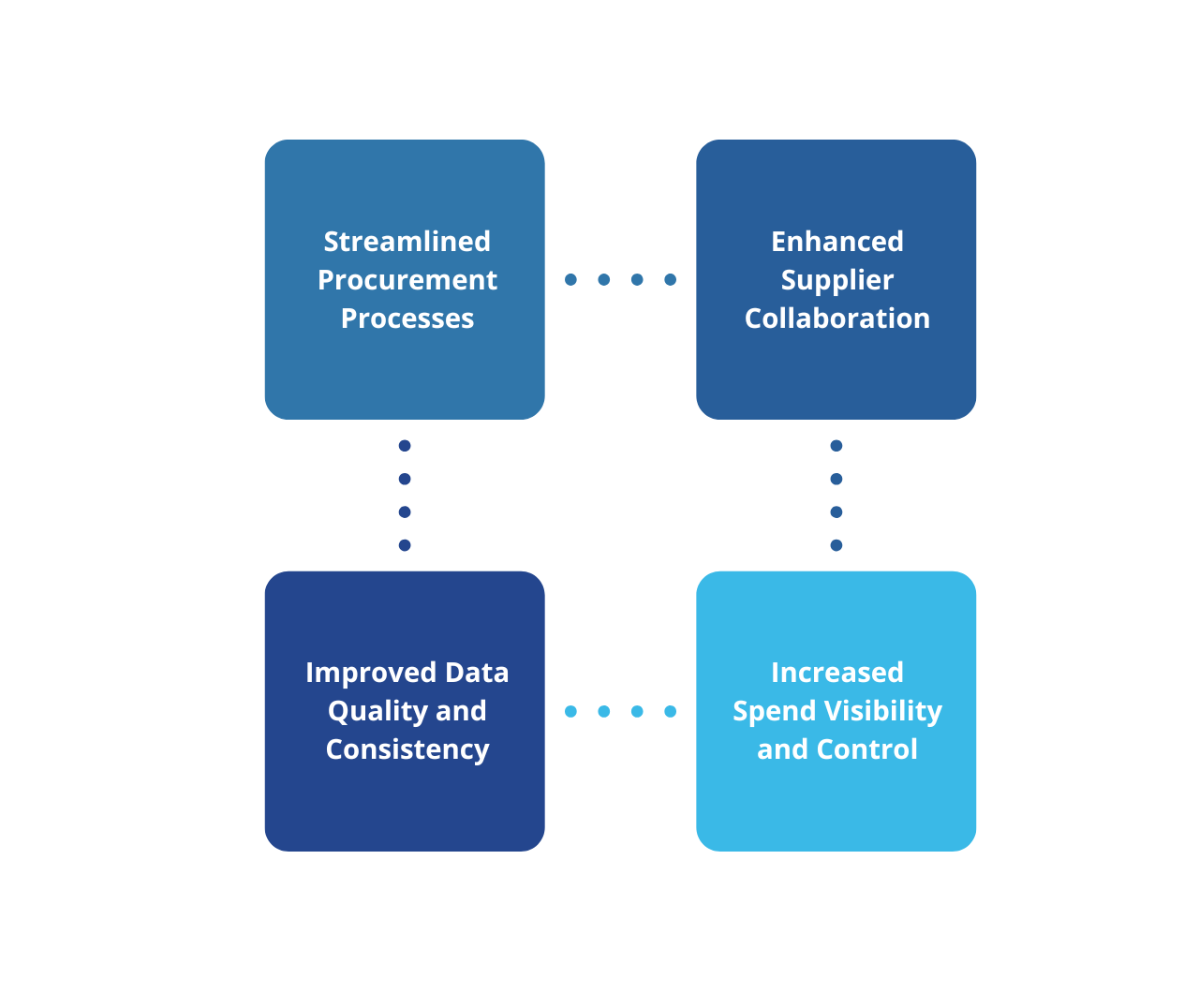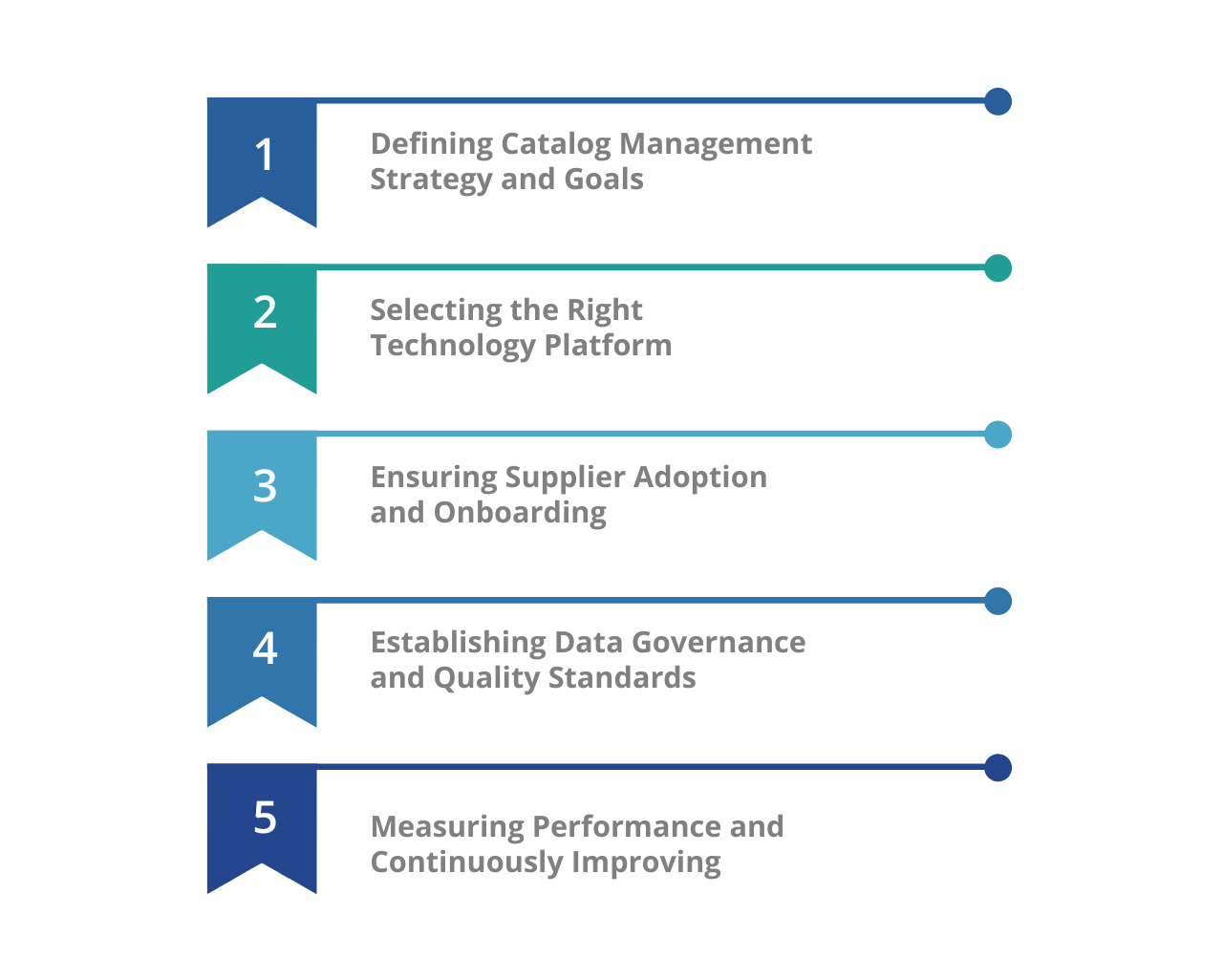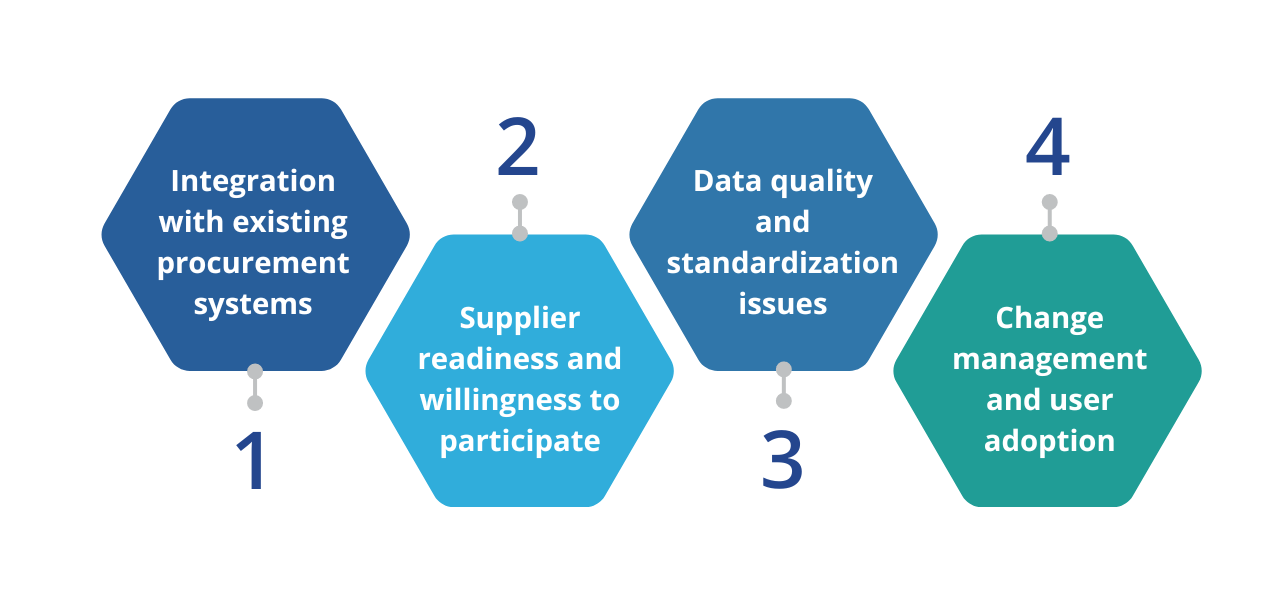Digital catalog management is rapidly becoming a critical component of B2B commerce, revolutionizing the way businesses interact and transact with their suppliers. As more companies embrace digital transformation, the role of digital catalog management in streamlining procurement processes and enhancing supplier relationships has become increasingly evident.
Traditional procurement practices, often characterized by manual processes and fragmented data, are giving way to more efficient and collaborative approaches enabled by digital catalog platforms. These platforms offer a centralized repository for product information, pricing, and supplier details, making it easier for buyers to find and compare products, negotiate terms, and place orders.
In this blog, we will explore how digital catalog management is transforming B2B practices, from improving procurement efficiency and spend visibility to fostering stronger supplier partnerships. We will also discuss the key considerations and best practices for implementing a successful digital catalog management strategy, and digital catalog management’s impact on B2B procurement processes.
The Shift from Traditional to Digital Catalog Management
Traditional catalog management methods often involve manual processes, such as maintaining paper-based catalogs or managing product information in disparate spreadsheets. These methods can be time-consuming, error-prone, and limit the ability to quickly update and share product information with suppliers and buyers.
In contrast, digital catalog management offers numerous advantages for both buyers and suppliers:
- Centralized product information: Digital catalog platforms provide a single source of truth for product data, ensuring accuracy and consistency across the procurement process.
- Real-time updates: Changes to product specifications, pricing, or availability can be instantly communicated to all parties, reducing the risk of outdated information and errors.
- Improved search and comparison: Advanced search functionality and product categorization make it easier for buyers to find and compare products, leading to more informed purchasing decisions.
- Enhanced collaboration: Digital catalog management facilitates collaboration between buyers and suppliers, enabling joint product development, customization, and faster time-to-market.
Modern digital catalog management solutions offer key features that address the limitations of traditional methods, such as:
- Cloud-based architecture: Allowing for scalability, accessibility, and seamless integration with other procurement systems.
- Workflow automation: Streamlining processes like catalog updates, approvals, and order placement, reducing manual effort and improving efficiency.
- Analytics and reporting: Providing insights into catalog performance, user behavior, and spend patterns to drive continuous improvement.
Benefits of Digital Catalog Management for B2B Practices
The role of digital catalog management in transforming B2B practices is evident through the numerous benefits it offers. Let’s explore how digital catalog management positively impacts various aspects of B2B procurement:
1. Streamlined Procurement Processes
Digital catalog management streamlines procurement processes in several ways:
- Faster and more efficient product searches and comparisons, enabled by advanced search functionality and well-organized catalog structures
- Automated order processing and approval workflows, reducing cycle times and improving productivity
- Reduced errors and manual intervention, as digital catalogs eliminate the need for manual data entry and minimize the risk of human error
2. Enhanced Supplier Collaboration
Digital catalog platforms foster enhanced collaboration between buyers and suppliers:
- Real-time catalog updates and product information sharing ensure that all parties have access to the most current and accurate data
- Improved communication and transparency between buyers and suppliers, facilitated by collaborative features such as messaging and notifications
- Collaborative product development and customization opportunities, as digital catalogs enable suppliers to showcase their capabilities and work closely with buyers to meet specific requirements
3. Improved Data Quality and Consistency
Digital catalog management plays an important role in improving data quality and consistency:
- Centralized catalog management ensures a single source of truth for product data, eliminating silos and inconsistencies
- Data governance establishes clear rules and processes for managing catalog data, ensuring accuracy and completeness
- Standardized product attributes enable consistent classification and description of products, facilitating better search and comparison
- Reduced data duplication eliminates redundant or conflicting product information across systems, improving data integrity
4. Increased Spend Visibility and Control
Digital catalog management empowers organizations with increased spend visibility and control:
- Detailed spend analytics and reporting capabilities provide insights into purchasing patterns, supplier performance, and cost drivers
- Better contract compliance and price management, as digital catalogs ensure that negotiated prices and terms are consistently applied
- Identification of cost-saving opportunities and supplier consolidation, as centralized catalog data enables organizations to analyze spend and optimize their supplier base
Implementing Digital Catalog Management: Best Practices
To successfully implement digital catalog management and maximize its impact on B2B procurement processes, organizations should follow these best practices:
1. Defining Catalog Management Strategy and Goals
- Align digital catalog management initiatives with overall procurement objectives
- Identify key performance indicators (KPIs) to measure success, such as catalog adoption rates, order accuracy, and cycle times
- Develop a roadmap for implementation, considering factors like catalog scope, supplier onboarding, and system integration
2. Selecting the Right Technology Platform
- Evaluate digital catalog platforms based on functionality, scalability, and ease of use
- Consider integration capabilities with existing procurement systems and processes
- Look for features that support collaboration, workflow automation, and data management
3. Ensuring Supplier Adoption and Onboarding
- Communicate the benefits of digital catalog management to suppliers, emphasizing improved efficiency and collaboration
- Provide training and support to help suppliers create and maintain high-quality catalog content
- Establish clear guidelines and standards for catalog data, including product attributes, images, and pricing
4. Establishing Data Governance and Quality Standards
- Define roles and responsibilities for catalog data management, including ownership, maintenance, and approval processes
- Implement data validation and enrichment processes to ensure catalog accuracy and completeness
- Establish a data governance framework to maintain consistency and integrity across catalogs
5. Measuring Performance and Continuously Improving
- Monitor key performance indicators regularly to track the impact of digital catalog management on procurement processes
- Analyze catalog usage data to identify opportunities for optimization, such as improving search functionality or streamlining approval workflows
- Gather feedback from users and suppliers to identify areas for improvement and drive continuous innovation
Implementing digital catalog management requires a strategic approach that encompasses people, processes, and technology. Organizations should focus on change management and user adoption, ensuring that all stakeholders understand the benefits and are equipped with the necessary skills and resources to leverage digital catalogs effectively.
Continuous monitoring and optimization are key to realizing the full potential of digital catalog management. Organizations should regularly assess performance, identify best practices, and adapt their strategies to meet evolving business needs and market conditions.
Challenges in Digital Catalog Management Adoption and Their Impact
1. Integration with existing procurement systems
- Challenge: Inconsistencies between digital catalog platforms and existing systems lead to data silos and inefficiencies.
- Example: A manufacturing company struggles to integrate a digital catalog platform with their legacy ERP system, resulting in duplicate data entry and errors.
2. Supplier readiness and willingness to participate
- Challenge: Some suppliers lack technical capabilities or resources to effectively participate in digital catalog initiatives.
- Example: A retail company faces resistance from long-standing suppliers hesitant to invest in necessary technology and processes.
3. Data quality and standardization issues
- Challenge: Inconsistent or incomplete product data from multiple suppliers compromises digital catalog accuracy.
- Example: A healthcare organization struggles with inconsistent product descriptions and classifications, hindering effective product comparison.
4. Change management and user adoption
- Challenge: Resistance to change and lack of user buy-in hinder successful adoption of digital catalog management.
- Example: A financial services firm faces low user adoption rates due to the procurement team’s reluctance to embrace a new platform.
Overcoming the Challenges
1. Integration with existing procurement systems
- Develop a clear integration roadmap and prioritize data synchronization
- Establish robust data governance practices
- Consider middleware or API-based integration solutions
2. Supplier readiness and willingness to participate
- Segment suppliers based on strategic importance and technological readiness
- Provide training, support, and incentives for adoption
- Offer flexible options for catalog creation and maintenance
3. Data quality and standardization issues
- Establish clear data standards and guidelines
- Implement data validation and cleansing processes
- Conduct regular data audits and collaborate with suppliers
4. Change management and user adoption
- Develop a comprehensive change management plan
- Provide tailored training and support to users
- Engage users early and encourage ongoing feedback
- Celebrate successes and share best practices
Organizations can successfully overcome barriers and unlock the full value of digital catalog management by addressing these challenges proactively and collaboratively.
Zycus: Empowering B2B Transformation through Digital Catalog Management
Zycus, a pioneer in AI-driven procurement technology, provides innovative digital catalog management solutions that revolutionize B2B procurement practices. Seamlessly integrated with Zycus’ end-to-end procurement suite, these solutions create a collaborative ecosystem where buyers and suppliers can interact efficiently, streamline processes, and unlock new levels of productivity across the entire procurement lifecycle.
Key features and benefits of Zycus’ digital catalog management solutions include:
- AI-powered catalog creation and maintenance, simplifying the process for suppliers
- Intelligent search and guided buying, making it easier for buyers to find and purchase the right products
- Real-time catalog updates and synchronization, ensuring accurate and up-to-date product information
- Configurable workflows and approval hierarchies, tailored to your organization’s specific needs
- Advanced analytics and reporting, providing insights into catalog performance and user behavior
Take the first step towards transforming your B2B procurement practices with Zycus’ digital catalog management solutions. Request a demo today to experience how Zycus can help you streamline your procurement processes, enhance supplier collaboration, and drive cost savings through intelligent catalog management.
Related Reads:
- Catalog Buying in B2B Procurement: Building Stronger Supplier Relationships
- Punchout Catalogs Are Changing E-Procurement: Know How!
- What Is Procurement Catalog Management: Your AIO Guide
- The Powerhouse of Production: A Guide to Direct Procurement in the Digital Age
- Mastering Change Management in E-Procurement Software Implementation: Best Practices
- Press Release: Zycus participates as a Sponsor at ProcureCon Indirect West







































